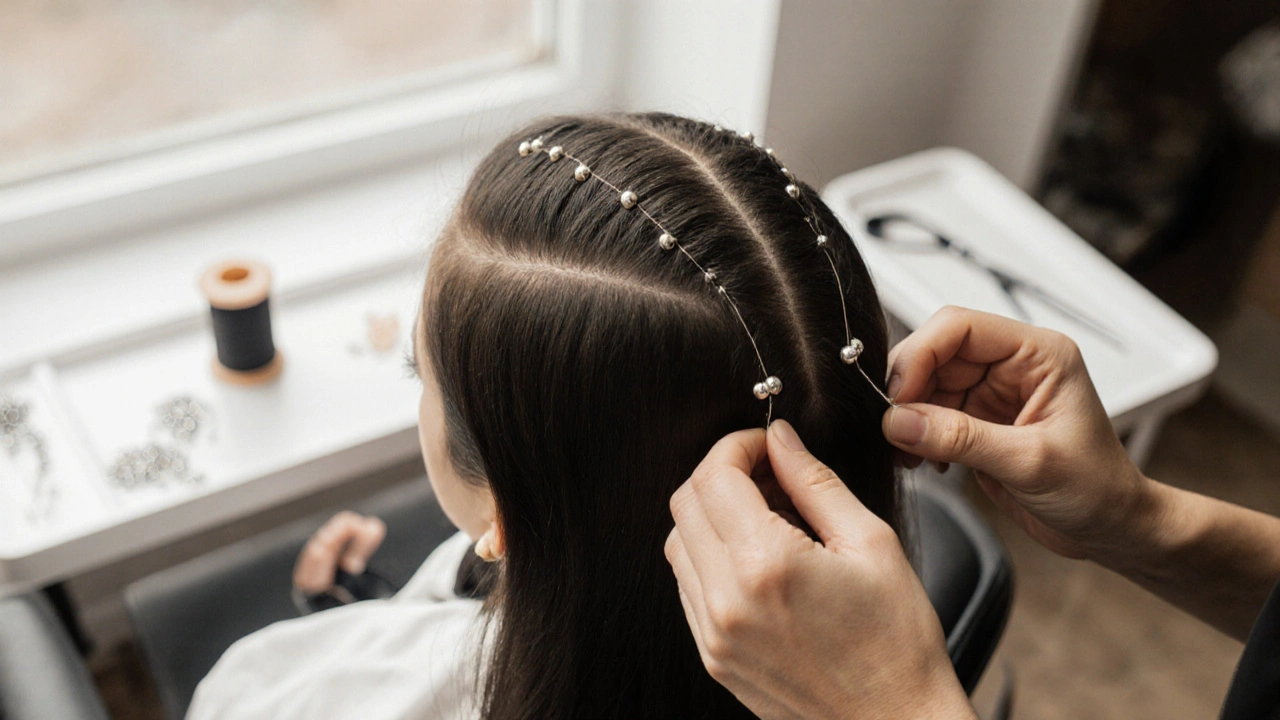When you want more length or volume without the commitment of permanent changes, tape in hair extensions, a type of semi-permanent hair extension applied in thin wefts with adhesive tape. Also known as tape-ins, they’re one of the most popular choices for women who want natural-looking results without salon visits every few weeks. Unlike clip-ins that you take out at night, tape ins stay put for 6 to 8 weeks, blending seamlessly with your own hair. They’re not glued directly to your scalp—instead, they’re sandwiched between two thin strips of your natural hair, making them lightweight and comfortable.
Tape in hair extensions work best for people with thin or fine hair because they distribute weight evenly and don’t pull on your roots like sew-ins or micro-beads might. They’re made from 100% Remy human hair, which means you can wash, heat-style, and color them just like your own hair. Brands like Bellami and Hot Head are often mentioned in real user reviews for how natural they look and how long they last without tangling or shedding. But not all tape-ins are created equal. Low-quality ones can slip, irritate your scalp, or leave sticky residue. That’s why knowing how to spot the difference matters.
How you care for them makes a huge difference. Washing too often, sleeping with wet hair, or using the wrong shampoo can break down the tape adhesive faster than you think. Most people who keep their tape-ins for the full 8 weeks follow the same simple rules: brush gently from the ends up, avoid oil-based products near the tape, and sleep with a satin pillowcase. You don’t need to be a pro—just consistent.
These extensions aren’t just for long hair. If you’ve got short hair and want to add volume around the crown or create the illusion of thickness, tape-ins can be cut and layered to fit. They’re also a go-to for people recovering from overplucked eyebrows or hair thinning after dyeing—it’s not magic, but it’s a practical fix that doesn’t require a long recovery time.
What you’ll find below are real stories and tips from people who’ve used tape in hair extensions, from how to choose the right color to what to do when they start slipping. You’ll see how they compare to halo extensions, clip-ins, and sew-ins. You’ll learn what to avoid, what actually works, and how to make them last without damaging your natural hair. This isn’t a sales page—it’s a collection of what works, what doesn’t, and what no one tells you until you’ve already paid for the wrong ones.

Hand tied and tape in hair extensions both add length and volume, but which is better for your hair type and lifestyle? Learn the real differences in durability, comfort, cost, and hair health.

Learn how to keep Bellami tape-in hair extensions from drying out with simple care tips-washing less, using the right products, avoiding heat, and sleeping on silk. Keep them soft, shiny, and lasting longer.